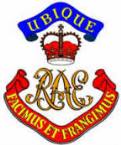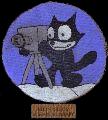AleRonin
Posts: 125
Joined: 4/30/2019
Status: offline

|
quote:
ORIGINAL: Chickenboy
quote:
ORIGINAL: jdsrae
I’ve been playing vs the AI for years and found that entertaining enough, but about a year ago started to think about a PBeM scenario 1 game.
It’s such a huge investment of time that before I do that I want to make sure I’d at least pose a moderate challenge to keep the other person interested.
I feel that I have to at least be “ok” at managing every aspect of the game as even against the AI if I neglect any aspect it can teach you a lesson.
In the last year I’ve read most of those AARs and am still tracking a few. They all give information that has helped me figure out what might work and what to try and avoid.
That includes cycling through all of the following on a regular basis:
1. select and maintain a clear strategic intent, between allied nations or Inter-service if playing as Japan
2. have a clear mission in each theatre
3. keep your order of battle organised, so you get the most out of each of the units you have. Before you get into the tactical detail of giving orders to units you need to have assigned what you think are the right forces to each area on the map
4. develop and track what the enemy has where, the intelligence picture, so you can factor that into your planning cycle
5. Understand industry and production rates of fuel, supply and war machines and how they constrain your operations planning
6. Understand the map, terrain has a big impact on land combat and supply movement
7. Setup and maintain your on map pilot training force
8. The whole point of playing is to try and win, so understand the victory points ratios and consider that in your operations planning
Once you’ve got all of the above and more sorted out, your tactical play will be more effective and more of a challenge to another person.
Assign balanced joint forces to missions at the operational level including land, air and naval assets.
Land combat
1. develop an understanding of firepower strength of your units compared to the enemy, it’s more important than raw Assault Value. Eg: a Chinese infantry unit with 100 AV will be crushed in open terrain vs a Japan 100 AV mixed infantry brigade.
2. If you don’t like the land campaign in China, learn to like it. At the strategic level, Japan can use as many of China’s Resources as that means they don’t have to send ships further to get them and the Supply generated there is handy to capture too
3. Everything else written about land combat from Sun Tzu, Guderian, et al
4. Understand what HQ unit bonuses do for you, including Air HQ which provide torpedoes and also Naval HQ naval support squads (or tenders) can do for your ship rearming - this is a big one to keep your ships fighting after day 1
Air combat
1. Develop an understanding of each air mission and when it is useful
2. Review all aircraft types and develop your understanding of comparative strengths and weaknesses
3. Don’t forget about night naval search or other night flying operations
4. Try to avoid flying unescorted bombers against enemy fighters
5. Try to avoid flying naval search into heavy enemy combat air patrols
Naval combat
1. Review the capabilities of every ship type and class, they all have a role to play
2. Always assign ASW capable escorts within task forces
3. Try to keep fighter cover over your task forces in contested or enemy waters
It really is an awesome game with its level of historical detail and preparing myself to play a grand campaign pbem is my ultimate goal too.
Have fun!
A great list, jksrae! 
From a picayune tactical perspective, I would add one tidbit. As the Japanese player you have many units that are fragments of larger organic units that will be reassembled 'later'. Identify those subunits with an asterix near their name and work to co-mingle them with their other subunits in order to reassemble / transform them into larger units. Your armored divisions will be more effective as a larger conglomerate, suffer comparatively limited disruption and so forth versus the constellation of armored regiments, scout forces, engineer units, etc. that make up their subunits. They're also easier to track and assign consistent tactical goals (and prep) when they're combined units verus the fragmented smaller ones.
Therefore you suggest to combine units into divisions or brigades for a better efficacy, but I have a question now:
if I launch an assault, a three regiments attack outcome would be different respect a full division assault?
|
 Printable Version
Printable Version
















 New Messages
New Messages No New Messages
No New Messages Hot Topic w/ New Messages
Hot Topic w/ New Messages Hot Topic w/o New Messages
Hot Topic w/o New Messages Locked w/ New Messages
Locked w/ New Messages Locked w/o New Messages
Locked w/o New Messages Post New Thread
Post New Thread